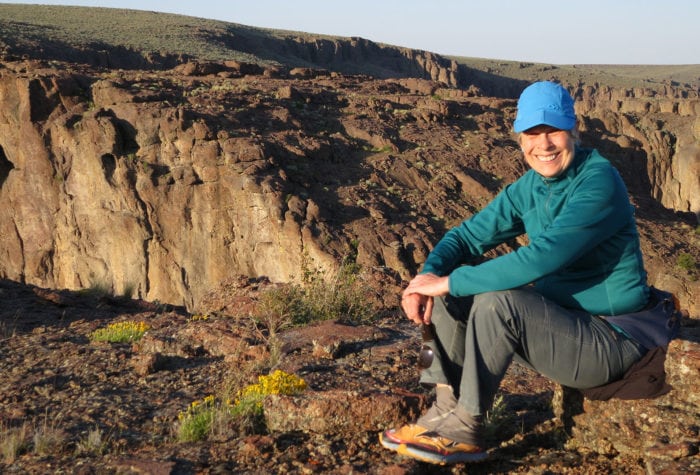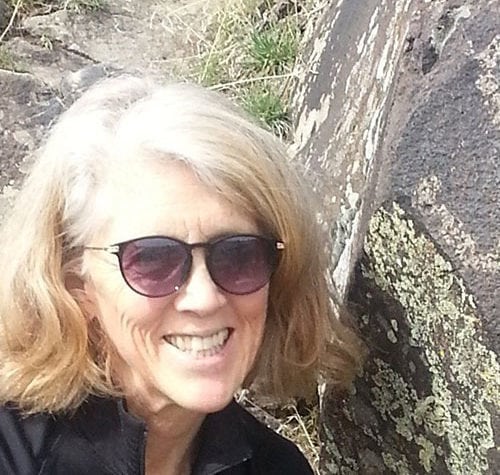A Conservation Leader in the Making
Please allow us to introduce our newest staff member, Joanna Zhang, who will be serving as our Conservation Fellow for the next two years. She’ll focus on propelling our efforts to protect the Owyhee Canyonlands and see desert rivers designated as Wild & Scenic Rivers.
As an ecology researcher with skills in science communication, sustainable development and environmental justice, Joanna brings a ton of talent and passion to this role and we couldn’t be more excited to welcome her into this desert advocate community.
Here’s your chance to get to know Joanna a little better.
Please give us a quick snapshot – where you grew up, a bit of your academic journey, and something you’re really proud of.
I grew up in Columbia, Missouri, which is a college town right between Kansas City and St. Louis. It’s full of beautiful trails and a couple of state parks where I’ve spent many hours hiking, running and biking.
In college, I had the flexibility of not declaring my major until the end of sophomore year. I found myself exploring classes such as an introduction to ecology titled “Life on Earth: Chaos and Clockwork.” Everything about Princeton’s Department of Ecology and Evolutionary Biology excited me, especially their semester-in-the-field programs. I spent my sophomore spring in Kenya, which eventually led to me carrying out my senior thesis research there.
Certain elements of Princeton’s culture push students toward careers in finance, tech, consulting, medicine, etc. All of those are wonderful careers to pursue, but they’re not for everyone. I applied to college to study engineering, then switched to a pre-med track for a while, before I finally let go of all that. I’m proud that I held space for myself to explore what really interested me. Through that exploration, I found my passion for conservation and also had the chance to dive into more creative pursuits, such as writing an additional senior thesis in the Creative Writing department — a collection of vignettes about my family, stretching from China’s Cultural Revolution to life in mid-Missouri. It was a really powerful experience to put together.
You’re working remotely from Bozeman, Montana through the winter, and joining us in Bend this spring. What kind of advice could you use to help you as you settle into Central Oregon life?
I would love recommendations on places to hike and trail run. What are some Central Oregon must-do’s, and perhaps some lesser-known gems where you can beat the crowds? Also, for when things open up a bit more, it would be great to get some thoughts on people’s favorite coffee shops, breweries and restaurants!
Your senior thesis focused on livestock-wildlife interactions in Kenya, where land-use conflict between Indigenous pastoralists and private landowners has increased due to climate change. What did you find as the key solutions to these conflicts?
To give some context, the privatization of land in Kenya that occurred during colonization reduced Indigenous pastoralists’ access to rangelands, which has resulted in overgrazing and land degradation in the group ranches managed by pastoralists. In recent years, insecurity regarding grazing rights and an increasing number of droughts has led to violent conflicts between pastoralists and private ranchers.
One of the aims of my senior thesis was to address whether a leasing arrangement was a viable way to reduce this kind of land-use conflict. Under such an arrangement, pastoralists would be allowed to graze their cattle on private land in exchange for a fee or cut of the profits. I found that grazing managed via this type of leasing arrangement is a promising way to reduce conflict.
The big takeaway from this project is that the best way to protect these beautiful landscapes and mitigate conflict is through respectful dialogue and community-based conservation efforts. When everyone can come to the table with a willingness to compromise and try something new, solutions such as this leasing agreement can come forth.
Your research and volunteering have already taken you to three continents – a vermiculture project in Peru, studying livestock management in Kenya, and, most recently, investigating almond fertilization in Spain. What drew you to Oregon’s sagebrush steppe now and how do you think that set of global experiences can help you here in the high desert?
There are a surprising number of commonalities between the places I’ve worked, especially since they all have ecosystems characterized by semi-arid climates and high elevations. Parts of the sagebrush steppe can be described that way, as well. Science has always been my guide, and I’ve gained a deep appreciation for such landscapes through my research and volunteering. Semi-arid landscapes may not boast the eye-catching grandeur of a tropical rainforest, but they are vital, beautiful ecosystems that are home to unique flora and fauna.
I’m excited to help protect Oregon’s high desert because of both the local and global significance of preserving wild places. Preserving wildlife habitat connectivity helps mitigate the worst impacts of climate change and confront the biodiversity loss crisis. We all live in the same atmosphere. The effects of something done in one corner of the world can be felt everywhere. The impacts of climate change and unsustainable land use may look a little different in each place, but they have similar results. For example, land degradation is evident in the Sacred Valley of Peru as well as the savannas of central Kenya – in one case, due to excessive chemical fertilizers and in the other, because of overgrazing – and both are exacerbated by increasingly unstable rainy seasons. A major challenge facing us today is helping people understand that global perspective – and also why local action matters. That’s why I’m excited to jump into ONDA’s work that can be seen and felt locally and makes a difference globally. None of the work that I’ve done would have been possible without local partnerships and a focus on robust science and candid communication. I’m looking forward to building on those collaborative experiences here at ONDA to further conservation of the sagebrush steppe.
What Joanna’s Been Reading and Listening To Get Through This Pandemic
- fiction: A Long Petal of the Sea by Isabel Allende and The Overstory by Richard Powers
- nonfiction: Trick Mirror by Jia Tolentino and Why We Sleep by Matthew Walker
- eerily prescient pandemic reading: David Quammen’s Spillover: Animal Infections and the Next Human Pandemic.
- podcasts: The Moth and Freakonomic’s new podcast People I (Mostly) Admire. It’s one of the playlists I usually listen to while working, and I discovered it calms my puppy down (I got him in October). Now we listen to it together sometimes while he focuses on being calm and I focus on working.

